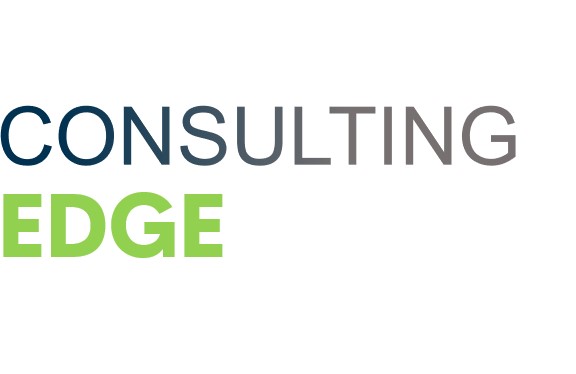
Decision-making has two sides: strategic and tactical. Both are used for problem-solving, giving direction to people and organisations. But, to find the best outcome, we must know their differences.
Strategic decision-making is the process of making a plan to reach long-term goals. It looks at factors inside and outside the organisation. It finds ways to benefit from advantages and lessen disadvantages.
Tactical decision-making is about doing things to help with bigger strategies. It is more concrete and focuses on short-term needs. Strategic decisions guide while tactical decisions fine-tune.
Winston Churchill and Bernard Montgomery were great examples of this. Churchill had strategic vision and Montgomery had tactical execution.
Chess is a game of strategic decision-making; pawns against grandmasters.
Understanding Strategic Decision-Making
To understand strategic decision-making with its sub-sections of “What is a Strategic Decision?”, we need to decode the dilemma of strategic vs tactical decision-making. This section explores the differentiating factors between the two approaches, providing insights into the nature and complexities of strategic decision-making.
What is a Strategic Decision?
Strategic decisions are pivotal choices made to reach long-term goals and gain advantage. Examining options, assessing risks/benefits, and selecting the best course of action are all involved. These decisions determine an organization’s direction and are crucial to its future. Resources must be allocated effectively to meet strategic objectives. In-depth research, data analysis, and consultation with stakeholders are necessary.
Strategic decisions affect operations, marketing, finances, and human resources. They lay the groundwork for future actions and guide success. Studies show companies that engage employees in decision-making have higher engagement and better performance. Tactical decision-making is like chess, but with real people.
Understanding Tactical Decision-Making
To understand tactical decision-making in the realm of strategic vs tactical decision-making, delve into what a tactical decision entails. Explore the unique characteristics and importance of tactical decisions, shedding light on this crucial aspect of the decision-making process.
What is a Tactical Decision?
Tactical decisions are key to any organization’s success. They involve quick analysis of a situation, weighing up options and their consequences. To make sound decisions under pressure, it is important to combine real-time data with intuition. This strategic mindset enables us to navigate complexities and make decisions that help achieve organizational goals. Tactical decision-making is like playing Minesweeper – you have to guess and hope for the best.
The Key Differences between Strategic and Tactical Decision-Making
To gain clarity on the key dissimilarities between strategic and tactical decision-making, delve into the nuances of each approach. Discover the level of impact, time horizon, scope, and the importance of flexibility and adaptability as you delve into the sub-sections.
Level of Impact
The level of impact indicates how much influence or effect a decision-making process has on an organization. It is essential to comprehend the various levels of impact to pick the right strategy for decision-making.
A table can help show the main contrasts between strategic and tactical decision-making regarding their level of impact.
| Strategic Decision-Making | Tactical Decision-Making | |
|---|---|---|
| Level | High-level | Low-level |
| Scope | Long-term and overarching | Short-term and specific |
| Focus | Overall organizational goals | Day-to-day operations |
| Time | Future-oriented | Immediate |
| Impact | Wide-ranging consequences for the entire company | Direct impact on specific units |
Besides the table, it is important to remember that strategic decisions have a long-term impact on an organization’s overall direction and success. These involve major resource allocation such as capital investments and market expansion.
Conversely, tactical decisions are mainly concentrated on optimizing current operations, guaranteeing efficient execution of strategies, and achieving short-term objectives.
To emphasize further how important it is to comprehend this difference, let’s take a real-life example from the retail industry. A clothing retailer found itself facing declining sales and increased competition from online platforms. To respond, the company made a strategic decision to invest in technology upgrades, revamp its brand image, and extend its product offerings. These initiatives had a high level of impact as they changed the company’s overall business model.
In comparison, tactically-focused decisions were made at various stages within these strategic efforts. For instance, hiring additional customer service staff to improve online shopping experiences or executing targeted marketing campaigns to promote new product lines. These tactical decisions specifically impacted specific departments or units within the organization.
By recognizing the diverse levels of impact that strategic and tactical decision-making have on an organization, leaders can make informed choices to attain both short-term goals and long-term success.
Strategic decision-making is like preparing for retirement, whereas tactical decision-making is like deciding between French fries or onion rings at lunch – both are essential, but with totally different time horizons.
Time Horizon
Time horizon is an important concept when it comes to decision-making. From ancient civilizations to modern businesses, understanding how time affects decisions has been a key factor in the outcome.
The table above outlines the differences between strategic and tactical decision-making. Strategic decisions involve broad choices impacting the entire organization, while tactical decisions focus on specific objectives in shorter time frames.
Scope-wise, strategic decision-making is like having a clear picture of the entire map. On the other hand, tactical decision-making is like trying to find your way in a pitch-black room with a broken flashlight.
Scope
Strategic decision-making involves long-term goals and objectives. It necessitates top-level management, major resource allocation, and extensive analysis and evaluation that takes into account market trends and competition. This affects the overall direction and strategies of an organization.
Tactical decision-making, on the other hand, is concerned with short-term goals and objectives. It requires middle and lower-level management, day-to-day operational decisions, quick analysis and evaluation of internal factors like processes and systems. This affects specific tasks, projects, and operational efficiency.
Pro Tip: Understand the scope of each decision-making process to ensure alignment between long-term aspirations and short-term execution. Strategic decision-making is like a gymnast, gracefully flipping and twisting through scenarios, while tactical decision-making is more like a contortionist, bending over backwards to fix problems.
Flexibility and Adaptability
Anticipating Change: Need to foresee potential alterations and modify tactics proactively.
Embracing Innovation: Flexibility allows for new ideas, tech, and approaches, cultivating innovation in the organization.
Responding to Uncertainty: Adaptability assists with the unknown by adapting plans when new info is available.
Agility in Problem-solving: Quickly identifying problems and alternative solutions is key in an adjustable decision-making process.
Emphasizing Continuous Learning: Flexibility promotes continuous learning, so decision-makers can gain the skills and knowledge needed.
Risk Management: Flexibility helps evaluate risks, adjusting strategies or taking precautionary measures as required.
Also, decision-makers must realize that flexibility doesn’t mean changing course all the time or no clear direction. It means being open, agile, and ready to adjust as things change.
The Importance of Strategic Decision-Making
Strategic decision-making is a must when it comes to success in any organization. It involves plotting long-term plans and setting goals to gain steady growth. To do this, one must look at inner and outer factors that have an effect on the business. Aligning activities with the overall vision can help a company seize opportunities and face challenges with ease.
Embracing strategic decision-making is key to staying ahead of the competition in a dynamic market. It allows firms to predict changes and adjust strategies quickly. When making a strategic decision, there are several elements to take into account, such as customer needs, competition, technology, and finances. Taking this holistic approach helps organizations find potential risks and reach their objectives.
Strategic decision-making also helps when it comes to resource allocation. Companies can prioritize initiatives that match their long-term goals and make the most of their resources. This way, resources are not wasted on projects that don’t have much impact on the company’s strategy.
One shining example of strategic decision-making is when Apple Inc. launched the iPod in 2001. At that time, digital music was popular but the music players were clunky and hard to use. Apple saw an opportunity and decided to make a sleek, easy-to-use device, together with an integrated online store – iTunes. This move changed the industry and made Apple a leader in tech markets.
The Importance of Tactical Decision-Making
Tactical decision-making is an essential part of any organization’s success. It’s about taking specific actions to hit short-term goals. It helps allocate resources, solve problems and adjust to changing conditions.
Tactical decision-making boosts operational efficiency. By making smart decisions regarding day-to-day tasks and processes, companies can make their operations run smoother and be more productive. This means they’ll satisfy customer needs better and stand out from the competition.
Tactical decision-making also makes businesses agile. By looking at data and trends, organizations can spot potential issues before they become serious. They can then make proactive adjustments to reduce risks.
Take the example of a retail company with long wait times at checkout. The management team used tactical decision-making: more cashiers during peak hours, better store layouts and self-checkout options. This not only improved customer satisfaction but also increased sales revenue.
Integrating Strategic and Tactical Decision-Making
To integrate strategic and tactical decision-making with the sub-sections “The Need for Alignment” and “Balancing Long-Term Objectives with Short-Term Needs,” you must understand how these two approaches work together. Aligning strategic and tactical decisions allows for cohesive planning and execution, ensuring long-term objectives are balanced with immediate necessities.
The Need for Alignment
Strategic and tactical decision-making must be combined to reach alignment in organizations. This ensures the plans set at the strategic level are executed at the tactical level. Aligning these two levels lets organizations be more effective and use resources better. Strategic decisions show the organization’s direction, while tactical decisions show how to do it.
For example, a company’s strategy may be to increase market share. Tactical decisions to do this would include finding target markets, advertising and distributing products. If these two levels are not connected, plans to reach the strategic goal will fail.
Aligning strategic and tactical decision-making is a long-known concept. A great example is the Battle of Trafalgar in 1805, when Admiral Lord Nelson’s vision and commands led to a British Navy victory.
Integrating strategy and tactics is like riding a unicycle while juggling knives. Balance is required to avoid disaster!
Balancing Long-Term Objectives with Short-Term Needs
Balancing long and short-term needs is a challenge for decision-makers. Organizations must find a balance between their goals and immediate requirements to guarantee success and growth. This means connecting daily activities with the broader vision, compromising and adapting plans.
Businesses must prioritize long-term objectives while also meeting short-term needs. Strategic decisions focus on the bigger picture, setting goals and creating a roadmap. Tactical decisions involve applying strategies with existing resources and constraints.
Short-term needs should not be forgotten when making strategic decisions. Organizations can remain agile by integrating both. This demands a continuous evaluation of priorities, predicting potential problems and taking proactive steps to reduce risks without sacrificing long-term objectives.
The importance of balancing long-term objectives with short-term needs is shown in Apple’s introduction of the iPod in 2001. Apple knew of the potential in portable music devices and, while pursuing their long-term goal of revolutionizing digital music consumption, addressed the short-term need for a music player.
Apple’s success with the iPod, leading to future innovations that changed industries, shows how effective integration of strategic and tactical thinking can lead to growth and remain mindful of the market. From corporate boardrooms to battlefields, these case studies show how combining strategic and tactical decision-making can mean success or failure for an organization.
Conclusion: Leveraging Both Strategic and Tactical Decision-Making for Success
Strategic and tactical decision-making are both essential for success. Strategic decisions give the long-term vision and direction, while tactical decisions ensure efficient execution. Combining these 2 approaches allows organizations to stay focused on their goals and adapt to changes.
To properly leverage both strategic and tactical decision-making, the long-term objectives must be aligned to short-term actions. Strategic decision-making involves analyzing trends and customer needs to create a plan. Tactical decision-making then turns this plan into actionable steps.
Strategic decisions set the overall direction, while tactical decisions do the day-to-day executing. Communication and coordination among teams is crucial to make sure everyone is aiming for the same goals. Leveraging both approaches helps organizations to better deal with uncertainties and challenges.
For example, a retail company is in a competitive market. Through strategic decision-making, they see an opportunity to differentiate themselves through customer service. They make a tactical plan which includes improving employee training, customer support systems, and loyalty programs.
By merging strategic vision with tactical execution, the company transforms their customer service. Customers are happy with the improved experience and become loyal customers. This gives the company a competitive edge and long-term success.
In short, leveraging both strategic and tactical decision-making is key for organizational success. It allows companies to stay on track with their long-term goals and adjust to changes in the short-term. By finding a balance between these two approaches, organizations can navigate complexities and gain sustained growth.






